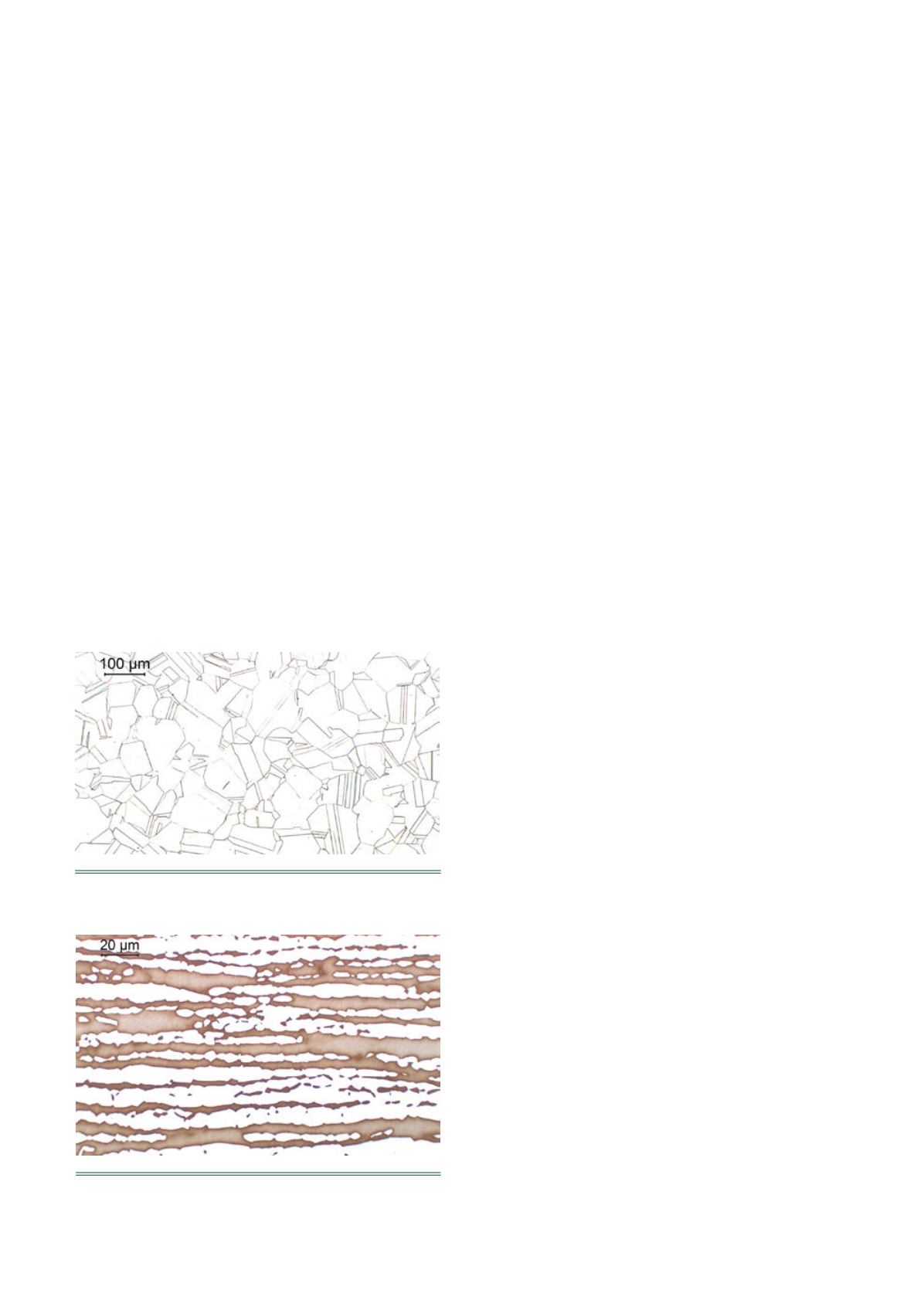
76
| WORLD FERTILIZER |
NOVEMBER 2016
n
n
Overall attack
: corrosion proceeds quite uniformly over the
exposed component.
n
n
Crevice corrosion
: corrosion is localised in the gap between
two joining surfaces.
n
n
Condensation corrosion
: corrosion occurs on those areas
where condensates are produced.
n
n
Stress corrosion cracking
: corrosion and mechanical stresses
are combined and failure occurs by cracking. Specifically,
chloride stress corrosion cracking is one of the most common
reasons why austenitic stainless steels deteriorate.
n
n
Strain induced intergranular cracking
: local strain variations
produce intergranular cracks leading to corrosion.
n
n
Cross-cut end attack
: corrosion takes place at the exposed
ends of protruding tubes.
Factors influencing corrosion
ASTM A262 method C (Huey test) is the corrosion practice
commonly used in austenitic urea grades to evaluate their
corrosion resistance in the urea environment. In the case of duplex
materials, ASTM A262 method B corrosion practice (Streicher test)
is considered as an appropriate test as well. Historical data for
Tubacex TP 316L UG, TP 310MoLN and UNS S32906 grades show
that the measured weight losses during these tests are well below
the requirements of the main urea engineering firms and licensor
companies.
TP 316L UG was the first urea grade produced by Tubacex.
Huey test results demonstrate a clear tendency of lower and more
repetitive weight losses with time. This fact is due to a deep
investigation made to optimise the metallurgy of the grade.
In the case of the TP 310MoLN grade compared to TP 316L UG,
weight losses are more stable and lower as, on one hand, its more
alloyed chemical composition guarantees better corrosion
resistance. This fact, together with a controlled and stable
production process, also allows the material to show less
variability (higher repeatibility) in the values, avoiding getting close
to limits established by licensors. On the other hand, this
behaviour is also the consequence of an extensive analysis of the
characteristics and metallurgy of this material.
Finally, UNS S32906 grade shows good results for both Huey
and Streicher tests. These tests can discriminate a good quality
from a bad quality. In this duplex grade, it is important to be able
to properly evaluate further characteristics, such as microstructure
(austenite-ferrite phases' balance, morphology and distribution) or
correct heat treatment curves.
What is clear is that corrosion test results of all the urea
grades currently manufactured in Tubacex are well below the
requirements of the main urea licensor companies. The reason
for these low values is found in an extensive R&D effort to
upgrade the three urea grades, which is explained in the
following.
The chemical compositions of TP 316L UG, TP 310MoLN and
UNS S32906 grades are described on one hand, in the international
standards, such as ASTM A213-A312 or ASTM A789-790, and, on the
other hand, in the main urea licensor’s specifications. In all of these
cases, the different chemical elements are allowed in a certain
weight percent range. Always within the allowed ranges, Tubacex
has defined its own internal chemical composition for the three
urea grades. With this purpose, the effect of the main influencing
chemical elements on the corrosion behaviour has been carefully
analysed. Some of these influencing elements are:
n
n
Cr: the key element to enhance the corrosion resistance. It
stabilises ferrite phase and increases the risk of intermetallic
phases precipitation, as well as increases nitrogen solubility.
n
n
Ni: an austenite stabiliser. It is not good for corrosion in a urea
environment.
n
n
Mo: a ferrite stabiliser. It increases resistance to pitting and
crevice corrosion and increases the risk of intermetallic
phases precipitation.
n
n
W: stabilises ferrite phase. It increases resistance to pitting and
crevice corrosion. It increases the risk of intermetallic phases
precipitation.
n
n
N: acts as austenite stabiliser, enhances corrosion resistance
and reduces the risk of intermetallic phases precipitation.
n
n
Other elements, such as C, P, S: they impair corrosion
resistance by carbide precipitation or by segregation.
Some of the above mentioned chemical elements have a
positive effect on the corrosion behaviour, but could turn into
negative if their mass percent is not well controlled. Also, possible
interactions between the different chemical elements and their
effect on the corrosion performance must be taken into account.
After an extensive analysis, the specific weight percent value for
each element on each grade (TP 316L UG, TP 310MoLN and UNS
S32906) has been stablished; the corresponding internal grades
have been defined accordingly.
Another key issue for corrosion resistance is the
microstructure. In this sense, for the austenitic grades, it is very
important to avoid precipitation of chromium carbides and to
achieve an adequate and homogenous grain size. For the duplex
grade, presence of sigma phase and chromium nitrides should be
suppressed and a homogenous austenite-ferrite structure with an
appropriate austenite spacing must be attained. The
Figure 1.
Microstructure of a TP 310MoLN tube.
Homogeneous austenite grains are observed.
Figure 2.
Microstructure of a UNS S32906 tube
constituted of austenite and ferrite bands.


